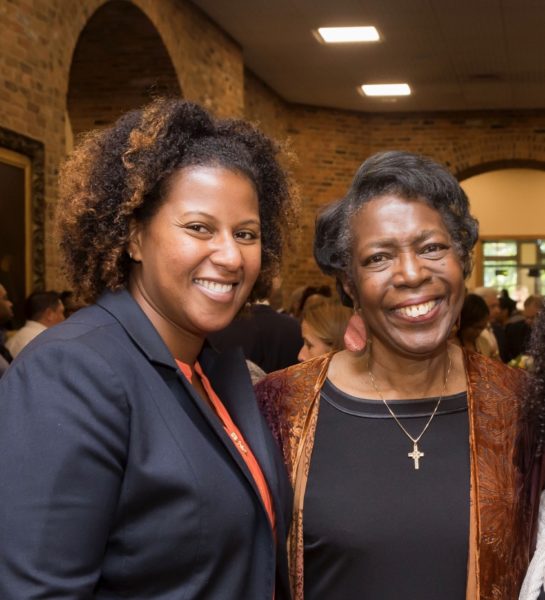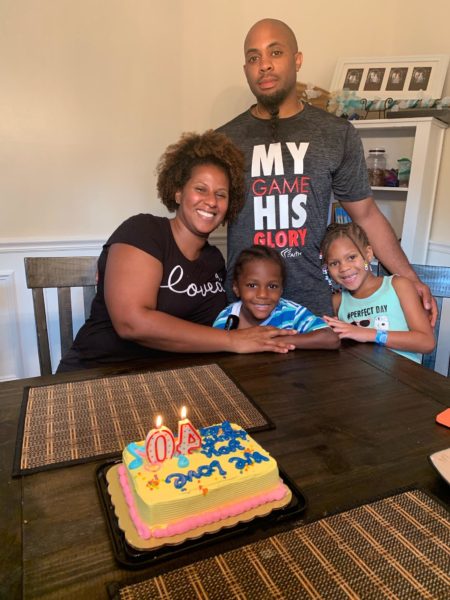by Amy Wolf
A Vanderbilt chemistry professor is living proof of the power of experiencing STEM (science, technology, engineering and math) education early. Renã Robinson, associate professor of chemistry, has been immersed in science-related activities and classes since she was a child. Today she is leading a diverse lab of researchers, using chemistry to uncover clues surrounding Alzheimer’s disease.
“Sometimes you can’t be what you can’t see. So for many students it can be hard for them to aspire to be scientists if they don’t have a role model. I’m working to help change that,” said Robinson, who is the Dorothy J. Wingfield Phillips Chancellor’s Faculty Fellow. Phillips was the first African American female in Vanderbilt history to receive an undergraduate degree, which she earned in chemistry.
“It is especially poignant to me that I get to serve in that chair,” Robinson said.
Childhood in STEM

Robinson benefited from camps and after-school programs focused on math and science at a young age. But she laments that those opportunities were not offered to all of her classmates.
“When I was in elementary school, I was bussed from my neighborhood to a predominately white school. I noticed stark differences in the quality of education. And even though I was only a child, I wrote a letter to my superintendent about it,” Robinson said.
In high school Robinson’s job as a consultant at a department store makeup counter gave her an opportunity to find practical application to chemistry. During high school she also was invited to an intensive summer-long program in another state.
“It was in an environment that was specifically for African American, Native American and Hispanic students. We did accelerated math and science the whole summer, and it was so fun,” she recalled. However, Robinson was keenly aware that she benefited from programs, camps and role models that others in her neighborhood did not.
Making positive change
That’s why Robinson has made it a mission to expand and replicate STEM programs. She’s doing this in partnership with NOBCChE, the largest U.S. network of African American chemists and chemical engineers, and the American Chemical Society.
“Our solution focuses on expanding successful existing projects, like hands-on science training, holistic mentorship for students and families, and teacher trainings,” she said.
At Vanderbilt, Robinson focuses on giving opportunities to students who might not have had representative mentors before coming to college.
“For us, it’s been very important to ensure that we have a diverse group of researchers on our team, and it has made a world of difference in helping to attract and recruit other students from diverse backgrounds to be a part of the work that we’re doing,” she said.

Mentor and mom
Robinson and her husband, who works in technology, are bringing a love of STEM to their two young children.
“I’ve been able to go to schools and do outreach with my kids’ classes, and just the joy that they have in being able to help lead the demonstrations—it’s amazing to see how excited they are about science,” Robinson said.
Alzheimer’s research
Robinson’s research uses analytical chemistry to examine brain proteins to find clues around the memory-robbing Alzheimer’s disease and why it’s more prevalent among African American and Latinx communities.
“Right now African Americans have two to three times the incidence of Alzheimer’s disease than non-Hispanic whites,” she said.
Robinson’s lab is one of only a few groups using chemistry to examine racial disparities in Alzheimer’s in this way.
“We’re looking at proteins that come from people of different racial backgrounds that have the disease or that don’t to analyze similarities and differences in the proteins,” she said. “We’re getting a lot of insight from these kinds of experiments.”
Diversity in research studies
To truly understand and fight diseases, Robinson said, it’s imperative that more underrepresented minorities are involved in research and clinical trials.
“When you look at clinical trials for drugs, especially for those that have been in development for Alzheimer’s disease and other major diseases, most research has been done in a majority population,” she said. “That needs to change.”
- Learn more about Robinson’s RASR lab on aging and Alzheimer’s.
- Watch and read more Find Your Impact profiles.
Video by Pat Slattery and Amy Wolf